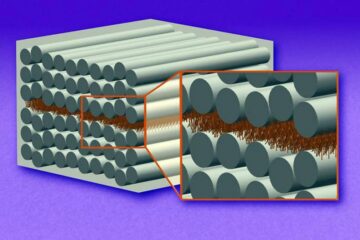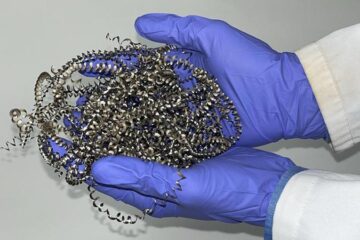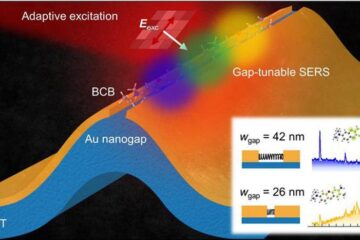Gene helps protect tumor suppressor in breast cancer

Scientists at The University of Texas M. D. Anderson Cancer Center have discovered a gene that protects PTEN, a major tumor-suppressor that is reduced but rarely mutated in about half of all breast cancers.
The gene Rak helps protect and regulate PTEN, which also is important in several other types of cancer, the team reports in the April edition of Cancer Cell. Causes for diminished PTEN protein levels in breast cancer absent a mutation of the PTEN gene have eluded researchers, who knew for several years that a piece of the puzzle was missing.
“We've clearly discovered the missing link that explains how Rak can stabilize PTEN protein to prevent breast cancer development,” said lead author Shiaw-Yih Lin, Ph.D., an assistant professor in the Department of Systems Biology at M. D. Anderson. “Our research explains why PTEN is defective in breast cancer and provides important clues for the development of effective therapy in Rak- or PTEN-defective breast cancers.”
In addition to breast cancer, PTEN frequently is mutated or inactivated in glioblastoma, melanoma, and cancers of the prostate and endometrium. The severity of PTEN irregularities strongly correlates with the tumor stage and grade. For example, complete loss of PTEN expression is found more frequently in metastatic cancer than in primary tumors.
In the laboratory, researchers found Rak can stabilize PTEN protein and function as a tumor suppressor gene to prevent breast cancer development.
To examine the correlation between Rak and PTEN protein expression, researchers analyzed cells from 42 breast cancers. Rak expression showed a strong positive correlation with PTEN.
They also investigated the effect of Rak expression by injecting mice with cells that over-expressed Rak. All the mice injected with Rak-overexpressing cells remained tumor free, whereas all the control mice developed tumors.
“To further assess whether Rak is a bona fide breast tumor suppressor gene, we sought to determine if loss of Rak expression would transform normal mammary epithelial cells,” Lin said. “We injected control cells or cells in which Rak was compromised into the mammary glands of healthy mice and monitored tumor growth. Notably, all the mice injected with Rak-knockdown cells, but none of the mice injected with control cells, developed tumors.”
Recent studies have shown that the PTEN protein is destroyed when it is bound by the enzyme NEDD4-1, which attaches targeting molecules called ubiquitins that mark PTEN for destruction by the ubiquitin proteasome complex.
Lin and colleagues showed that Rak saves PTEN from degradation by attaching a phosphate group to the protein, blocking NEDD4-1 from binding to PTEN.
Although this study demonstrates a PTEN-dependent function of Rak, Lin says much research remains ahead on yet-unidentified PTEN-independent functions of Rak in tumor suppression.
“Recently, we found that Rak can prevent spontaneous DNA damage and has a critical role in suppressing cancer stem cells,” he said. “So, we will expand our research efforts toward determining how Rak helps to maintain genomic integrity.”
PTEN
This work was supported in part by a grant from the National Cancer Institute.
In addition to Lin, other authors on the study included Eun-Kyoung Yim, Ph.D., Guang Peng, M.D., Ph.D., Hui Dai, M.D., Ruozhen Hu, M.S., Yiling Lu, M.D., and Gordon Mills, M.D., Ph.D. of the Department of Systems Biology at M. D. Anderson; Kaiyi Li, Ph.D. of the Department of Surgery at Baylor College of Medicine, Funda Meric-Bernstam, M.D. of the Department of Surgical Oncology at M. D. Anderson; Bryan Hennessy, M.D. of the Department of Gynecologic Medical Oncology at M. D. Anderson; and Rolf Craven, Ph.D. of the Department of Molecular and Biomedical Pharmacology at the University of Kentucky, Lexington.
Media Contact
More Information:
http://www.mdanderson.orgAll latest news from the category: Life Sciences and Chemistry
Articles and reports from the Life Sciences and chemistry area deal with applied and basic research into modern biology, chemistry and human medicine.
Valuable information can be found on a range of life sciences fields including bacteriology, biochemistry, bionics, bioinformatics, biophysics, biotechnology, genetics, geobotany, human biology, marine biology, microbiology, molecular biology, cellular biology, zoology, bioinorganic chemistry, microchemistry and environmental chemistry.
Newest articles

“Nanostitches” enable lighter and tougher composite materials
In research that may lead to next-generation airplanes and spacecraft, MIT engineers used carbon nanotubes to prevent cracking in multilayered composites. To save on fuel and reduce aircraft emissions, engineers…

Trash to treasure
Researchers turn metal waste into catalyst for hydrogen. Scientists have found a way to transform metal waste into a highly efficient catalyst to make hydrogen from water, a discovery that…

Real-time detection of infectious disease viruses
… by searching for molecular fingerprinting. A research team consisting of Professor Kyoung-Duck Park and Taeyoung Moon and Huitae Joo, PhD candidates, from the Department of Physics at Pohang University…





















